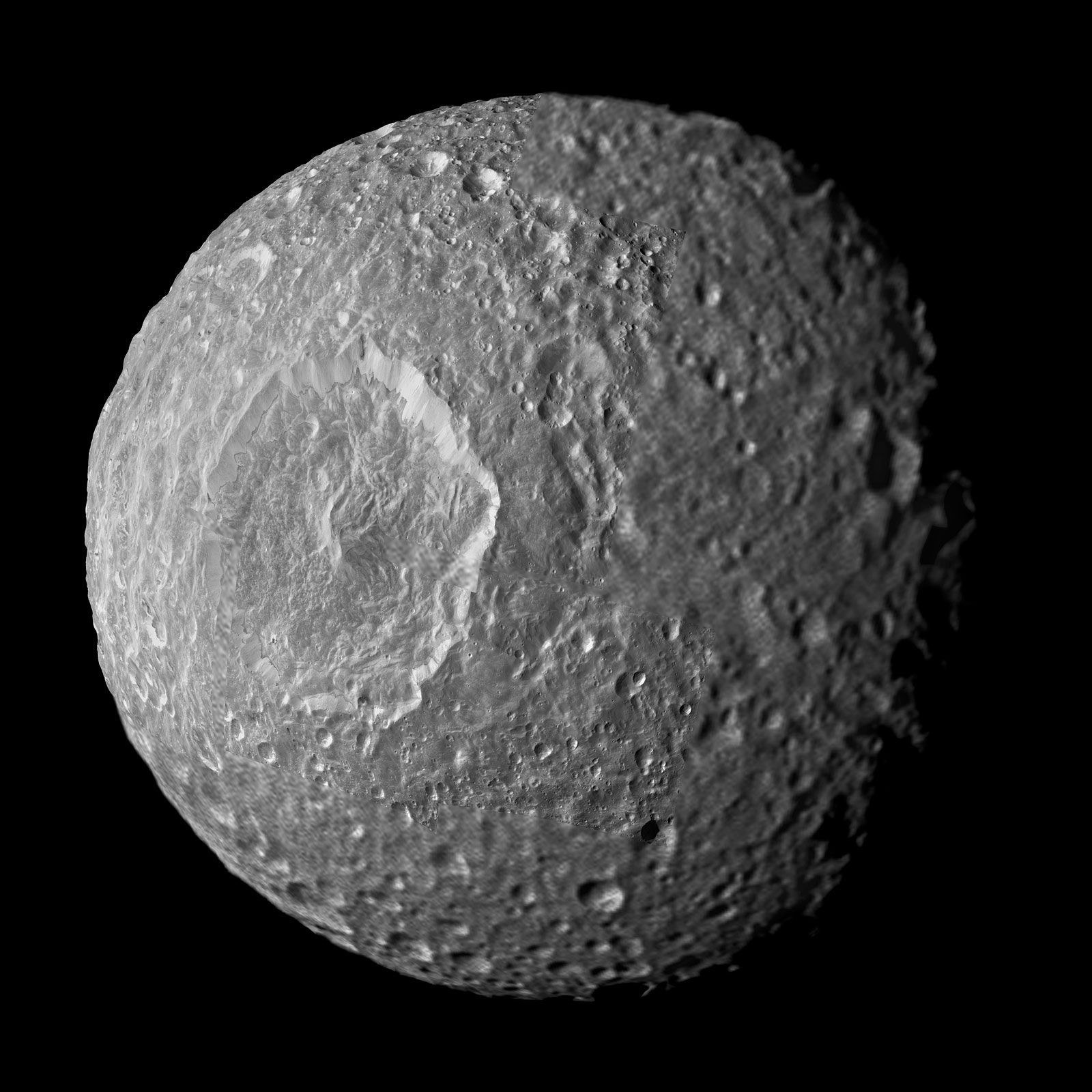Description

Disclaimer: Copyright infringement not intended.
Context
A recent study published in Nature presents a groundbreaking discovery that Saturn’s moon, Mimas, commonly known as the “Death Star” moon due to its similarities with the iconic Star Wars space station, possesses an internal ocean underneath its rocky crust.
Details
Death Star
- Mimas is one of the moons of Saturn, and it's known for its striking appearance due to a large crater named Herschel that dominates one side of its surface. Here's some key information
- Mimas was discovered by the astronomer William Herschel in 1789, making it one of the first moons of Saturn to be observed.
Size and Composition
- Mimas is relatively small compared to Saturn's other moons, with a diameter of about 396 kilometers (246 miles). It is composed mostly of water ice with a small amount of rock.
Surface Features
- The most prominent feature on Mimas is the Herschel Crater, which is about 130 kilometers (81 miles) in diameter, giving the moon a resemblance to the Death Star from the Star Wars franchise. The impact that created the Herschel Crater likely came close to shattering Mimas entirely due to its size in relation to the moon's diameter.
- Mimas has a surface temperature of around -200 degrees Celsius (-328 degrees Fahrenheit), making it one of the coldest bodies in the Solar System.

Orbit
- Mimas orbits Saturn at a distance of approximately 185,520 kilometers (115,310 miles) and takes about 22.6 hours to complete one orbit.
Exploration
- Mimas has been visited by spacecraft, including the Voyager probes and the Cassini spacecraft. These missions have provided valuable data and images of the moon, helping scientists learn more about its geology and composition.
Recent study
- This study was conducted by an international team of researchers and holds the potential to help planetary geologists better understand the conditions for a planetary body to possess an internal ocean, which could also possess the conditions for life.
- While Mimas was photographed on several occasions by NASA’s Cassini spacecraft, including a close flyby in February 2010
|
PRACTICE QUESTION
Mimas, recently seen in the news, is a natural satellite of which planet?
- Saturn
- Mars
- Jupiter
- Uranus
Answer A
|
















